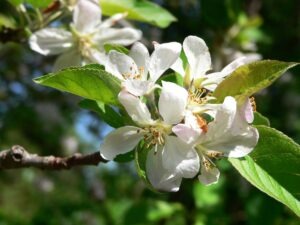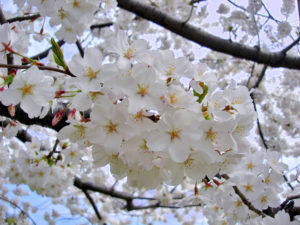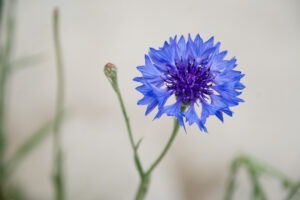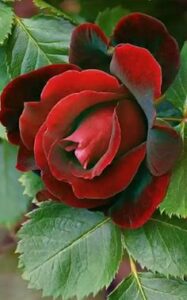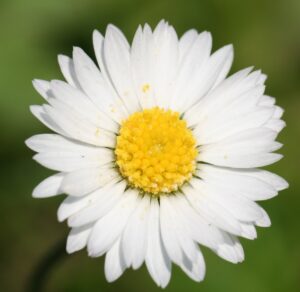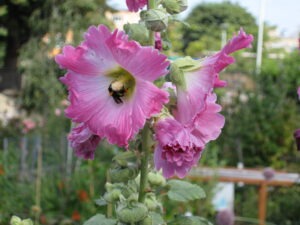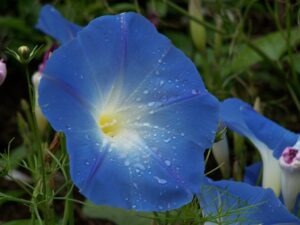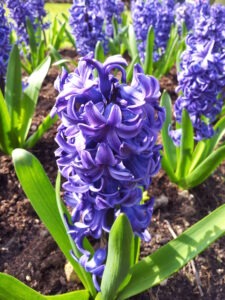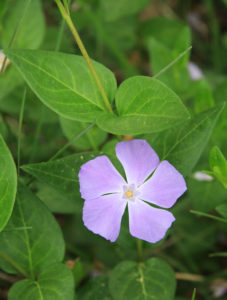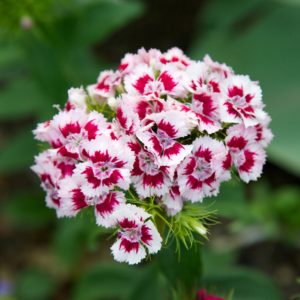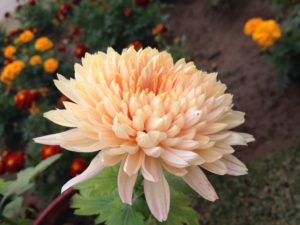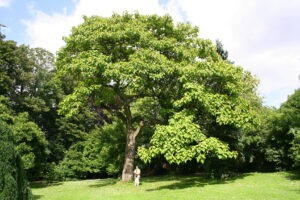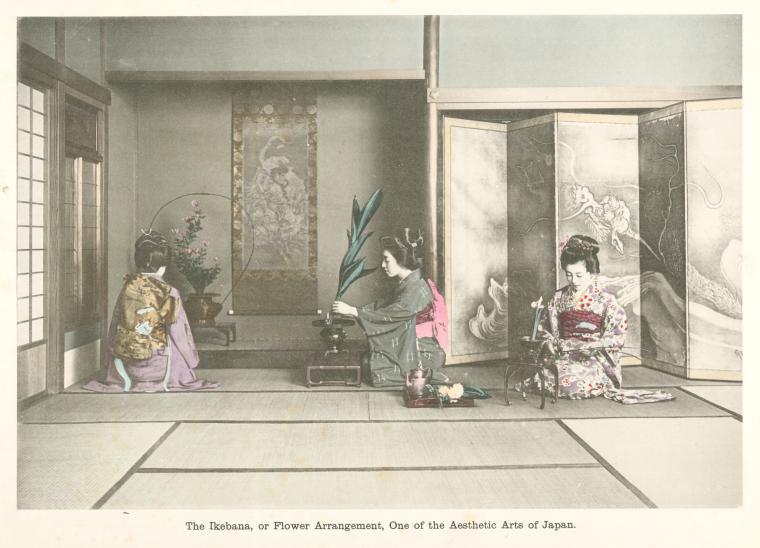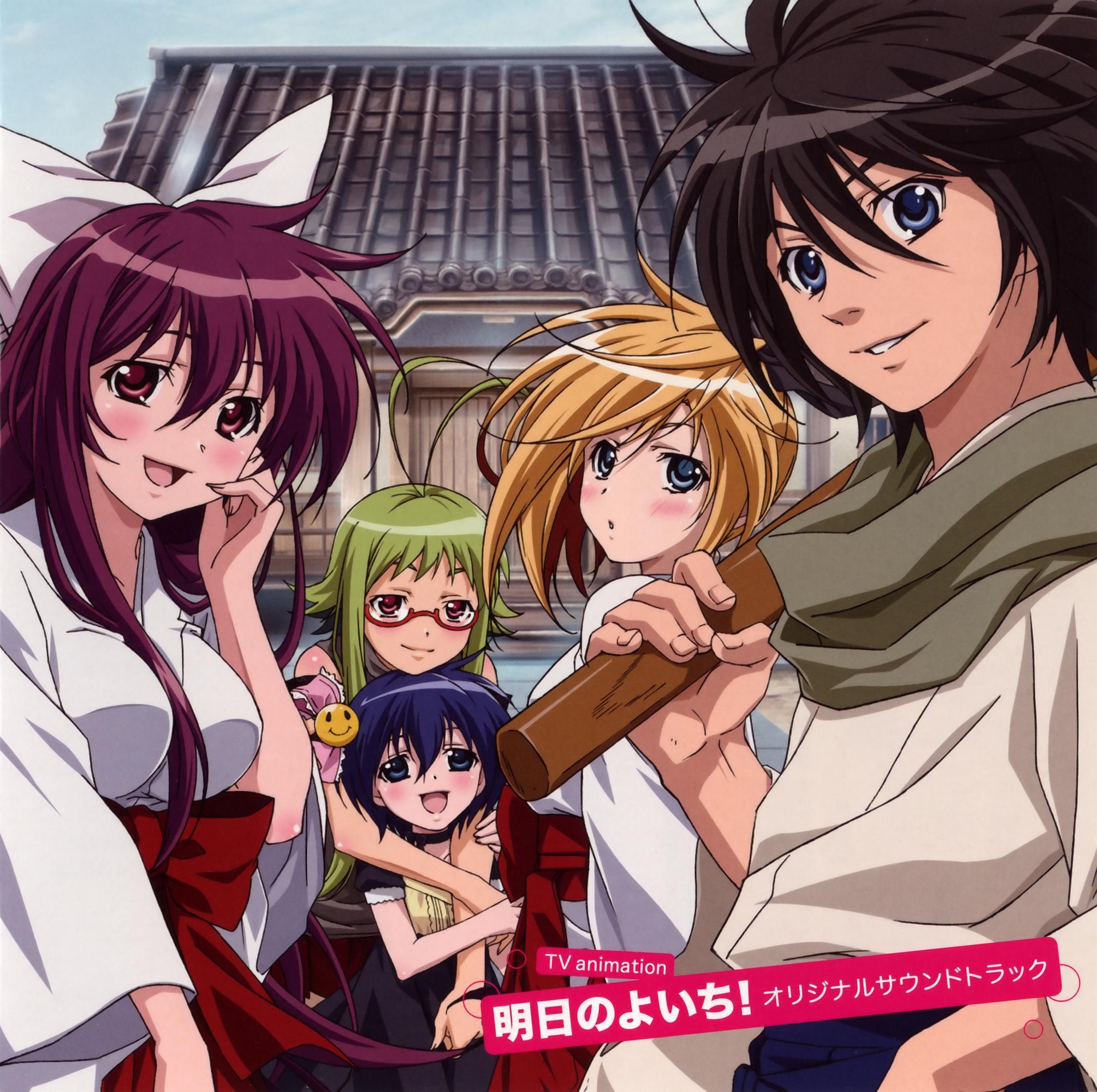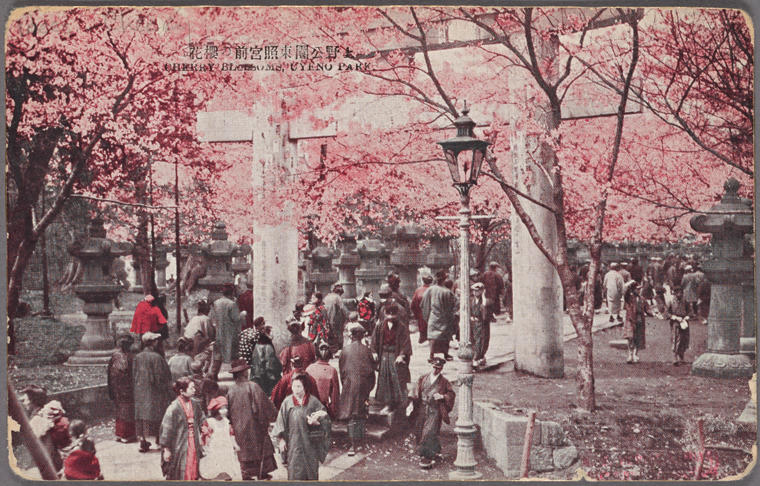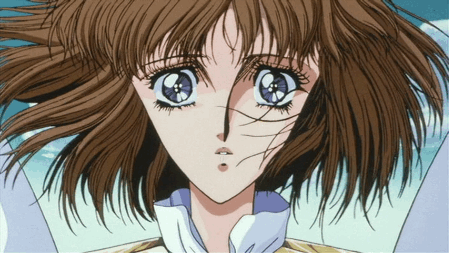“If I were asked to explain the Japanese spirit, I would say it is wild cherry blossoms glowing in the morning sun!”
— Motoori Norinaga (1730-1801)
Japan’s flower language isn’t as well develop as in the West. Japan’s stories and theater focused on humanizing plants as opposed to using them to convey emotions and messages. Victorian Europe took the language of flowers to an extreme, but Japan had its own set of symbols. Because anime has developed into an international medium, I’ll examine both Japan’s flower symbology and the West’s flower language. You will see both styles mixed in anime.
Japan’s Language of Flowers

During the Heian period, the symbolism of flowers took off, appearing in noh, poetry, and the world’s first novel. However, Japanese language allows for an identification between human emotions and nature that English doesn’t really allow (Poulton, 1997). In Japanese culture, natural phenomena has a spiritual life and power of its own. Noh showcases this in its more than a dozen plays that feature a flower or tree revealing itself as an incarnation of a god or Buddha. Various folk stories feature trees and flower spirits that can marry humans and bear children. The Willow Wife is one of my favorites. This aspect of Japanese culture remains unique. We don’t find many European stories that allow plants to be Christian saints or to marry humans.
Hanami, or flower viewing, was popular during the Heian period. The cherry blossom became a favorite, representing the fleeting moments of life. But each season had its own flower. And not everyone loved the sakura. The poet Saigyo found his hermitage invaded by visitors wanting to see a nearby tree’s blossoms (Poulton, 1997). He doesn’t refuse them when they visit, but he grumbles about it in a poem:
The cherries’ only fault: the crowds that gather when they bloom
Despite its popularity, the cherry blossom wasn’t the most important flower. Chrysanthemums became the symbol of the imperial house soon after they arrived from China. The flower became the imperial crest and the throne of the emperor was even named after it: the Chrysanthemum Throne (Lombardi, 2014). The flower meant the opposite of the cherry blossom: it represented longevity and power as opposed to transient beauty and gentleness.
While most flowers associated with Japanese women, the chrysanthemum directly associated with men. In the story of The Chrysanthemum Spirit, a young woman falls in love with a handsome courtier. She eventually finds out he is an autumn flower–the chrysanthemum–that took the shape of a human. The story “uses visual and poetic imagery traditionally associated with women to reframe reproductive potency in male terms (McCormick, 2013).”
Murasaki and Floral Characters
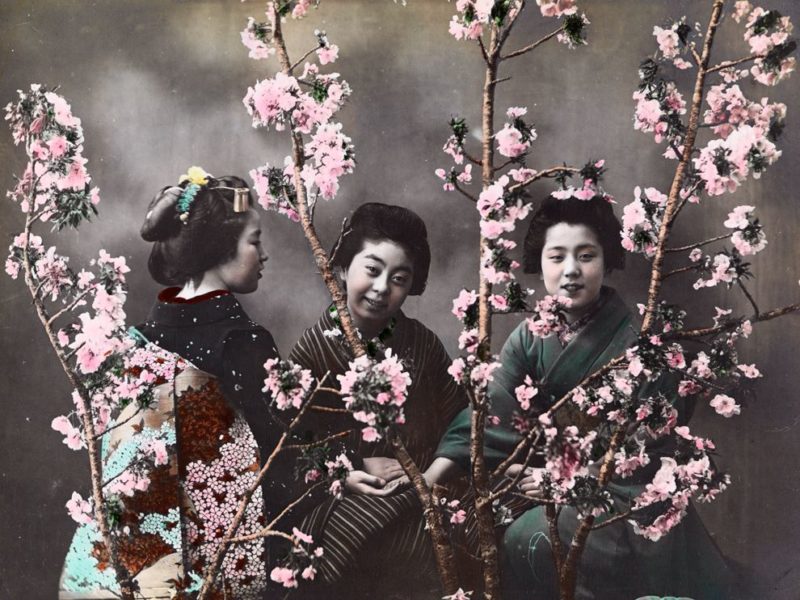 While shapeshifting flowers remained popular in noh and traditional stories, Murasaki took the idea and converted it into indirect story telling in her Tale of Genji. The novel tells its story indirectly through what is left unsaid and its imagery. It’s a difficult read because of its layers. Murasaki used various flowers to represent character personalities, future events, themes, and more. She relied on the reader to put everything together.
While shapeshifting flowers remained popular in noh and traditional stories, Murasaki took the idea and converted it into indirect story telling in her Tale of Genji. The novel tells its story indirectly through what is left unsaid and its imagery. It’s a difficult read because of its layers. Murasaki used various flowers to represent character personalities, future events, themes, and more. She relied on the reader to put everything together.
Murasaki weaved the names of flowers into chapter titles to suggest the events that will happen and the characters associated with each chapter. Flower included: evening glory, saffron flower, hollyhock, orange blossoms, lavender, morning glory, plum, cherry blossoms, carnations, and many others. She gives many of the women in Genji’s life the names of flowers. They act as shorthand for the character of each woman and stand in for her.
In one scene, Genji and a woman named Yugao were having an affair. Yugao was a common flower at the time. It blooms only at night and dies soon after. During their trist, Murasaki makes repeated references to a blooming yugao, foreshadowing Yugao’s early death just a few scenes later (Kido, 1988). Murasaki makes other flower references to foreshadow Genji’s other affairs and the fates of each woman. Even Genji’s fall from grace can be seen in these flower symbols. Centuries later, Charlotte Bronte would adopt the same technique for her work.
The Victorian Language of Flowers
A flower is not a flower alone; a thousand thoughts invest it.
During the Victorian period, women often became amateur botanists. They began developing a complete language using flowers, but early dictionaries often contradicted each other (Engelhardt, 2013). Many of the definitions extend deep into history, such as the idea olive branches symbolize peace, roses symbolize love, and so on. Although the Victorian period saw codified symbols and expansion of the language, most of the floral code date to medieval and Renaissance literature (Rothenberg, 2006; Engelhardt, 2013). But Charlotte Bronte and George Eliot used the symbols to construct a language fairly similar to Murasaki. Jane Eyre used flowers as sexual codes and to describe characters in shorthand as Murasaki did. For example, during a scene when Jane and Rochester take a walk, flowers appear throughout the description. Engelhardt (2013) drops the emotional associations and meanings of the plants during the walk:
…edged with box [stoicism]; with apple trees [temptation], pear trees [comfort], and cherry trees [deception] on the one side, and a border on the other, full of all sorts of old-fashioned flowers, stocks [lasting beauty], sweet Williams [sensitivity], primroses [first youth; if evening, inconstancy], pansies [thoughts], mingled with southernwood
[jest/bantering], sweet-briar [I wound to heal], and various fragrant herbs. (249)
According to Engelhard (2013), Bronte seems to use the flowers to reveal the feelings of the lovers and of Rochester’s mysterious behavior in the scene. He is tempted (apple trees) to open his heart after years of being a stoic, but he realizes this would require deception (cherry trees) and ruining Jane’s beauty (stocks) because of her inexperience with love (primrose) and her sensitivity (sweet Williams). So Rochester jokes with her (southernwood) and hopes he will heal the pain of his marriage to Bertha (sweet-briar).
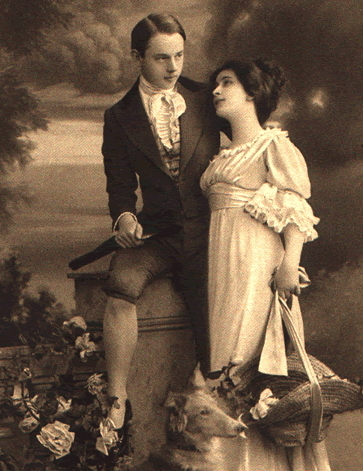 Most of the time, people used flowers to express embarrassing feelings, on par with what Bronte outlines with Rochester. In these floral dialogues, a lady or gentleman would ask a question or express an emotion by showing a flower. The other would then respond with their own flower. Flowers can be combined to form entire sentences, and the color of the flower can shift the meaning. So to carry Bronte’s illustration:
Most of the time, people used flowers to express embarrassing feelings, on par with what Bronte outlines with Rochester. In these floral dialogues, a lady or gentleman would ask a question or express an emotion by showing a flower. The other would then respond with their own flower. Flowers can be combined to form entire sentences, and the color of the flower can shift the meaning. So to carry Bronte’s illustration:
pink rose + cherry blossom + pink rose = desire to be educated in passion.
Pink roses have three meanings: desire, passion, and joy of life. Cherry blossoms equate with education. So the combination can also mean passion to be educated in desire, which still has the same general meaning.
Flowers and Their Meanings
Because the meanings of flowers were in dispute throughout the Victorian period, you may encounter some dictionaries that contradict what I list there. As with any language, time and use can change the meanings of words.
References
Endresak, David, “Girl Power: Feminine Motifs in Japanese Popular Culture” (2006). Senior Honors Teses. 322. htp://commons.emich.edu/honors/322
Hoffman, Michael (2012) Sakura: Soul of Japan. Japan Times. https://www.japantimes.co.jp/life/2012/03/25/general/sakura-soul-of-japan/.
Kido, Elissa (1988) Names, Naming, and Nature in the Tale of Genji. Literary Onomastics Studies. 15. Article 4.
Lombardi, Linda (2014) Chrysanthemums are more than just a symbol of autumn. Japan Times. https://www.japantimes.co.jp/news/2014/10/27/national/chrysanthemums-just-symbol-autumn/
McCormick, Melissa. (2013) “Flower Personification and Imperial Regeneration in The Chrysanthemum Spirit.” In Amerika ni wattata monogatari-e. Tokyo: Perikansha.
Poulton, Mark. (1997) The Language of Flowers in the No Theatre. Japan Reveiw. 8. 39-55
Rothenberg, David (2006) The Marian Symbolism of Spring ca. 1200-ca.1500: Two Case Studies. Journal of Musicology Society. 59 (2) 319-398.
